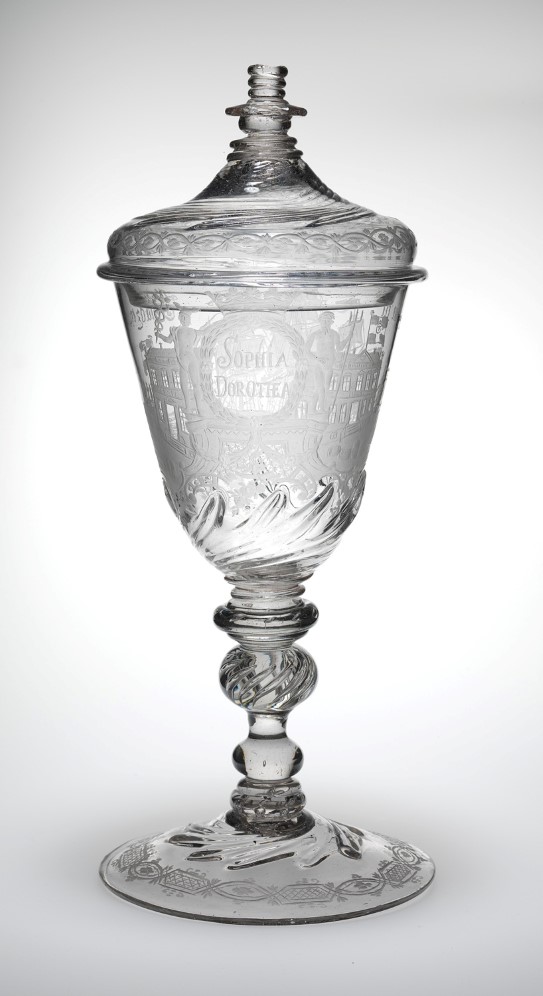Goblet, Sophia Dorothea
Heinrich Gottlieb Köhler
Transcription
Narrator
This glass goblet has witnessed an important event and a dramatic escape. We will return to these events later. But first, let us welcome you to Denmark-Norway in 1741, where a glassworks is opening at Nøstetangen in Hokksund, 60km west of Oslo. Inger Helene Stemshaug, a curator at the National Museum, explains:
Inger Helene Stemshaug
At this time, we are part of Denmark-Norway, so everything Norwegian is also Danish. And it’s the King of Denmark who looks at Norway and thinks, hmmm, now that I’ve deforested Denmark, we can no longer have glassworks here in Denmark, because I’ve got no more forest to use for fuel. But Norway is full of fjords and waterfalls and, not least, trees.
Narrator
At the command of the Danish king, we start glass production at Nøstetangen. Here glass goblets are blown and elegantly engraved to fulfil orders from well-to-do individuals and the royal court. On important occasions, the goblets can be filled with wine and passed from hand to hand, and raised to entertaining toasts.
And one order is from Jakob Juel, a Norwegian who orders a goblet for the launch of his large merchant ship, the Sophia Dorothea. At that time, Juel was extremely wealthy. He was also in charge of Norway’s national treasury. Perhaps it just got too tempting to help himself to some cash, as after a while he was arrested in one of the biggest embezzlement scandals of the age, and imprisoned in Akershus Fortress.
Inger Helene Stemshaug
Luckily for Jacob Juel, he had a very loyal servant who helped him to escape from the fortress and flee to Sweden. His family followed after him, with this goblet in their luggage.
Narrato
Over 200 years later, it was rediscovered by chance by a former employee at the museum.